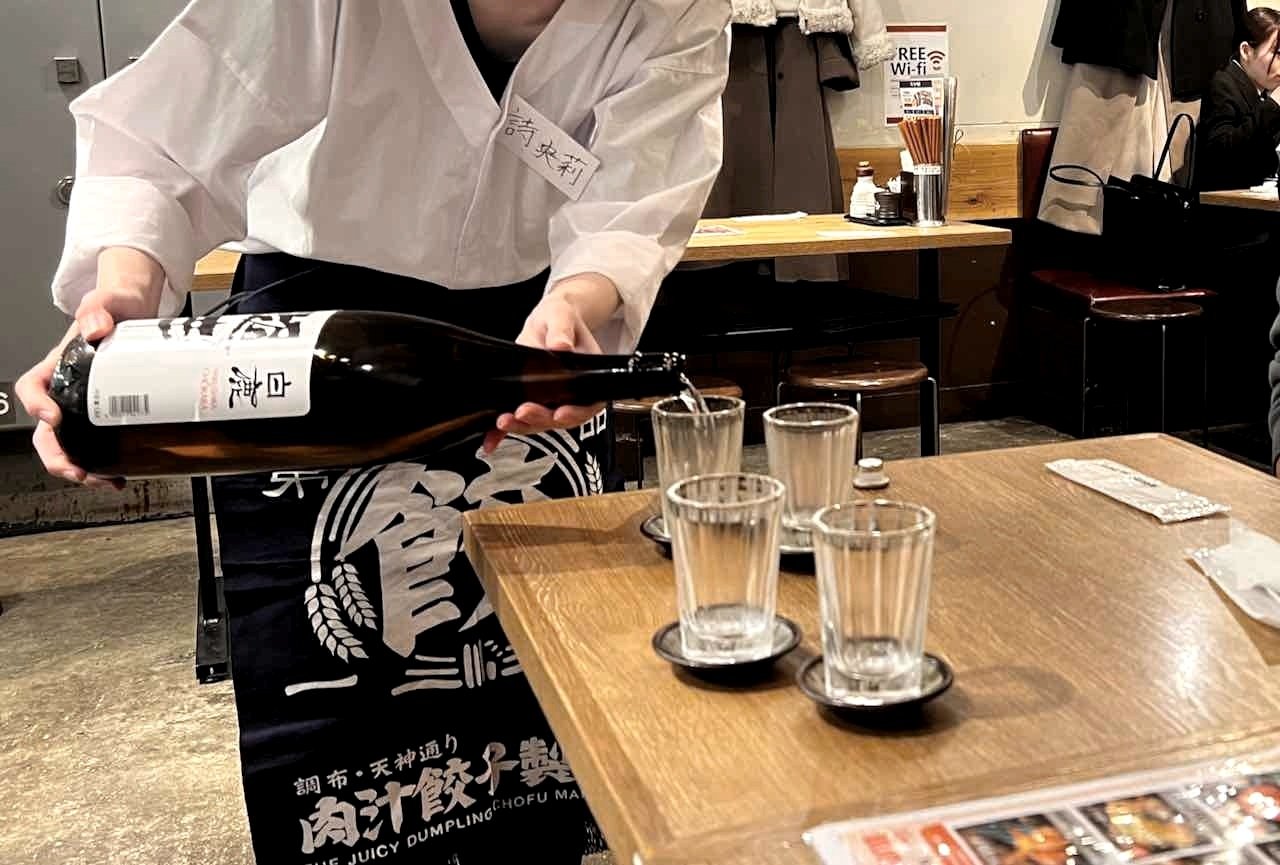Sake Runneth Over
"Before we begin, I'd like you to take a close look at how our server pours the Sake," says my elderly Japanese guide as we sit at a table in a restaurant in Shinjuku City. When traveling, I find the best way to get a sense of a place and its people is through the food. So, I booked a food tour and scheduled it early on in my trip to Japan to help guide my exploration of the local culture. My tour guide was a retired financial analyst who had spent decades traveling the world but was now providing tours for people who were visiting his home country.
Our server approached us with glasses to serve our drinks. She greeted us, smiled, and placed the glasses over small saucers. Once she had done this, she opened a bottle of Sake and poured it. She poured into the glasses until they were full and continued until each glass overflowed with Sake spilling over the brims. Instinctively, I looked at this from the perspective of an administrator. Restaurants live and die by keeping a close eye on cost controls. A spilled tablespoon of Sake with every customer adds up quickly and ultimately requires the business to buy additional bottles with no opportunity to recover those costs. Restaurant owners want their guests to be happy, but not...too happy. Our friendly server was young, and I assumed she was new on the job and still learning to pour efficiently.
My friend then directed my attention to the spillage, "Did you notice how she pours to the point where the Sake overflows? She's doing this on purpose. That spill is a customary act of kindness from the restaurant." When he said this, I'm sure somewhere in the world, a food cost control accountant fell over and died of shock—purposely spilling Sake?!
My guide continued, "Now that our drinks have been poured, we are ready to begin. The first thing we do is bow so that we can sip directly from the glass without picking it up. This bowing gesture is meant to acknowledge and thank the divine for creating rice that we can use for nourishment and enjoyment."
Once I had sipped the drink, my teacher instructed me to pick up the glass and momentarily place it to the side.
"At this point, we must acknowledge the establishment for pouring more than required. We never waste the generosity of our hosts. We pick up the saucer that has collected the Sake and sip what was poured over."
After this second step, it's customary to thank the establishment for the extra offering. I was told that a simple acknowledgment to a server or other staff member with a slight nod or bow would suffice.
Before we enjoyed the rest of the Sake, he concluded the lesson by saying, "We must show gratitude for these experiences, acknowledge those around us, and be humble. We should not mindlessly drink without thinking about where the drink came from and who shared it with us."
These acts of thanksgiving made the Sake taste better. Being offered what was required was good, but having my "cup runneth over" was a blessing. It would have been sad if I had moved forward into the evening and missed the opportunity to acknowledge that little gift.
If done well, rituals of thanksgiving can make our experiences more enjoyable. More importantly, we need to train our eyes to see those blessings and be grateful. Generosity is a force that inspires life in the world and helps to rekindle faith in those who are able to receive it with gratitude. There is so much good in the world; let’s not miss out on opportunities to see it.
Thanks for reading, friend, or I mean, “Arigato!”
